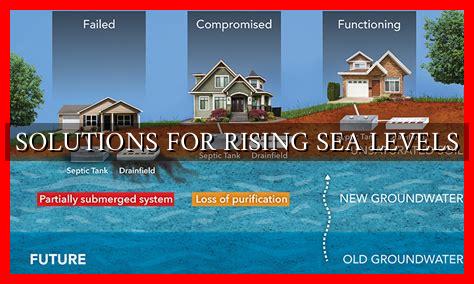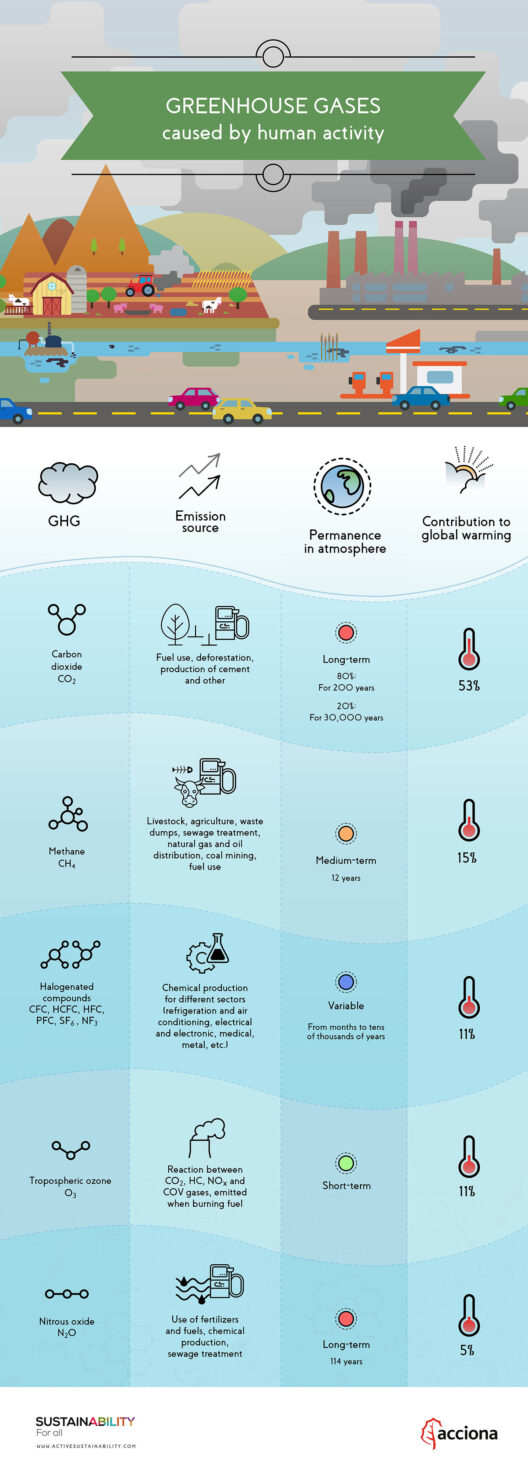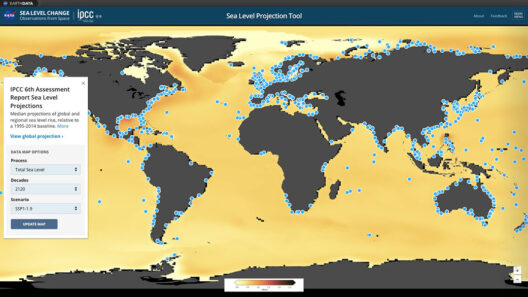In recent decades, the alarming phenomenon of rising sea levels has transformed from a distant concern into an imminent threat, reshaping the very fabric of our coastal communities and ecosystems. As guardians of the planet, we find ourselves at a crossroads, caught in a relentless tide that begs the question: Can we halt this upward surge? Diving deep into the currents of climate science and innovative solutions reveals a complex tableau where action is not just a possibility but a necessity.
Before we explore potential solutions, it is crucial to understand the underlying mechanisms driving sea level rise. Melting freshwater from glaciers and ice sheets, coupled with thermal expansion of seawater due to increased temperatures, contribute to this relentless creep. The Earth’s oceans, once a source of life and sustenance, are becoming harbingers of peril, threatening to engulf land and heritage, especially in low-lying regions.
Against this backdrop, the elucidation of solutions is paramount, demanding an integration of technology, nature, and community resilience.
Innovative Engineering: Reclaiming the Shoreline
One of the most audacious avenues to combat rising sea levels lies in engineering ingenuity. Coastal cities, historically synonymous with resourcefulness, are now buoyed by cutting-edge technologies aimed at reclamation and adaptation. Sea walls, levees, and tidal barriers are being designed to withstand the ferocious onslaught of storm surges and high tides. These structures, often likened to fortresses against the encroaching sea, can provide immediate protection to vulnerable urban areas.
However, without sustainable practices, such measures could serve merely as a temporary reprieve. Enter the realm of green infrastructure—an amalgamation of natural elements like mangroves, wetlands, and living shorelines integrated alongside traditional engineering. This dual approach not only mitigates flooding but also enhances the resilience of local ecosystems, creating a synergistic relationship between humanity and nature. For example, mangroves act as a natural buffer, absorbing storm energy, while simultaneously sequestering carbon, amplifying their value in the fight against climate change.
Community-Level Initiatives: A Collective Response
While structural solutions are paramount, the human dimension plays an equally critical role. Community engagement emerges as a cornerstone of resilience strategies. Local initiatives that promote education and awareness about sea level rise and its implications can empower citizens, fostering a culture of proactive stewardship. When communities understand the nuances of their environments, they become more adept at advocating for sustainable practices and safe land-use policies.
Participatory planning processes involving residents in decision-making, along with innovative land use approaches such as managed retreat, can significantly contribute to addressing the imminent risks. This approach entails relocating infrastructure and populations away from vulnerable areas and integrating green spaces into urban planning. The concept encourages a harmonious coexistence with nature, staving off the destructive encroachments of rising seas while fostering a sense of ownership and responsibility among residents.
Moreover, local governments can implement programs to encourage the adoption of resilient building standards that factor in rising sea levels, helping to minimize the long-term economic toll of flooding and disaster recovery. The momentum of collective action, spurred by committed communities, can create a robust bulwark in the face of this pervasive threat.
Transformative Policies: Steering the Course
Yet, individual and community efforts must be supported by strategic policy frameworks and international cooperation. The need for transformative policies that tackle carbon emissions at the source is non-negotiable. The interconnectedness of climate change and sea level rise mandates a concerted international effort; nations must unite to enforce stricter emission regulations, invest in sustainable energy, and support initiatives that curb global warming. The Paris Agreement, for instance, serves as a lens of hope—a collective commitment to limit temperature increases and mitigate climate risks.
Furthermore, funding mechanisms aimed at supporting adaptation strategies, especially in developing nations most affected by rising sea levels, are essential. These financial resources can channel efforts toward sustainable infrastructure projects that prioritize resilience, ensuring that vulnerable populations are not left defenseless against the approaching tide.
In the quest to arrest the runaway tide of rising sea levels, a cohesive strategy that weaves together technological innovation, grassroots initiatives, and progressive policies is imperative. Solutions extend far beyond mere engineering feats; they require a cultural shift in how we perceive our relationship with the ocean—a departure from viewing it as an adversary to embracing it as a partner in protecting our planet. Each endeavor, whether it be the construction of seawalls or the rewilding of coastal habitats, is akin to threading a tapestry; each action intricately contributes to a larger narrative of resilience and sustainability.
As stewards of this planet, the question is not if we can stop rising sea levels but rather whether we can muster the resolve and creativity to implement these multifaceted solutions. The ocean may rise, but with ingenuity, collaboration, and an unwavering commitment to our collective welfare, humanity can become the architects of a resilient future, where land and sea coexist in harmony rather than conflict.







